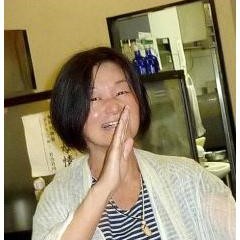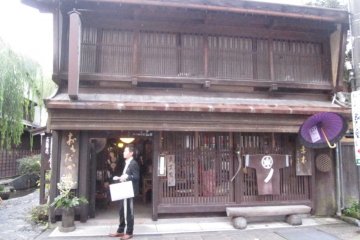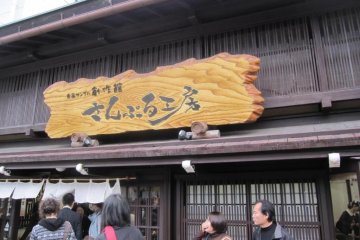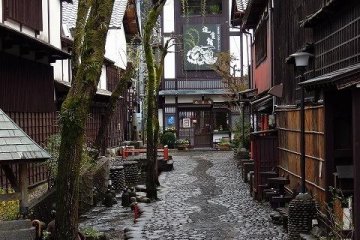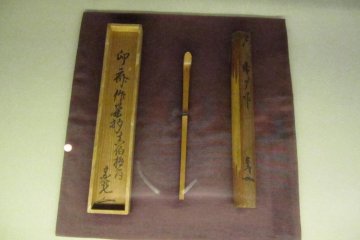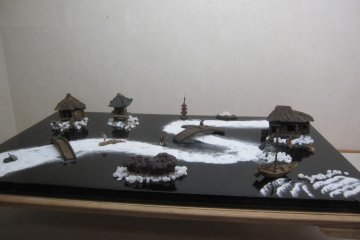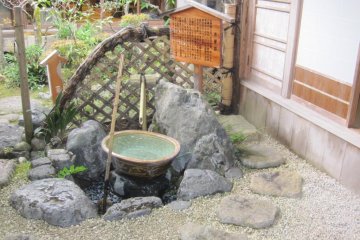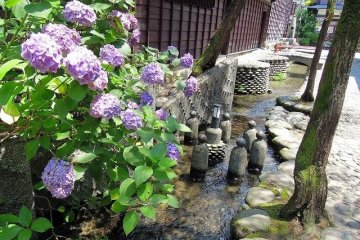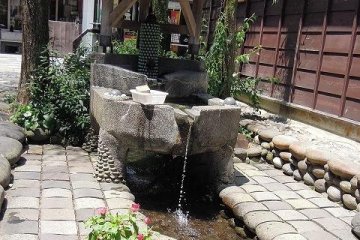My town has a few museums such as the Hakurankan and the Omodakaya. The Omodakaya displays everyday items of commoners, where the Saito museum is focused more on those items from the upper class.
The Saito Museum and Cafe, next to the Omodakaya Folk Museum, sits on the original property of the Saito Family, who were influential during the Keio time (1865 -1869) of the Edo period. The cafe is in what used to be the main house and is now designated a tangible cultural property representing the Keio period. In the cafe you can enjoy green tea and Japanese sweets in the quaint Japanese tatami rooms while looking at the pretty courtyard. You will see a set of Girls Dolls made in the Edo period there. Adjacent to the cafe is a small souvenir shop selling traditional Japanese crafts, bags, coin purses, hair accessories, incense and so on.
The entrance to the main art gallery is located down a beautiful narrow street, called Igawa-komichi, lined with rounded stones and water, situated between the Omodakaya and Saito Museum Cafe. If you aren’t paying attention, you might miss it.
In summer this is a very good spot for local children to play in the water. They really enjoy walking in the water without shoes or socks!
This museum displays collections of artistically crafted items such as calligraphy, paintings and tea ceremony utensils used by the Saito family for 270 years since the Edo period. The museum owns 1300 items in total including tea bowls, plates for the sweets, tea cases, folding screens and hanging scrolls.
The museum displays items in four rooms: There is the Permanent collection exhibition room, the Special exhibition room, the Library and a Tea room. Because of the large number of artifacts, the exhibition items are rotated from time to time to allow other items to be displayed. These are changed for seasons, special events or general rotation.
One particularly interesting piece of calligraphy has a little illusion. In the permanent room there is a piece of calligraphy which when you look at it from an angle, is a different image than when you look at it straight on. When you approach the image you will see rabbits, but upon looking at it straight on, you will see the moon. The Japanese don't associate with the story of the ‘man on the moon’ but instead a rabbit. I really hope you will go there and see it for yourself. This eye magic motif is related to Japanese folklore.
In the courtyard between the permanent and special exhibition rooms, is a view of the courtyard that can also be seen from the cafe. In the corner, right by the door, is a bamboo tube sticking out of a well. Please try to pour some water there. If you put your ear to the tube, you can hear the sound of water hitting the walls like a song.
The Saito Museum helps tell the story of an upper class family in Gujo while introducing aspects of culture and history. As a contrast to its neighbor, it helps give a full view of Japanese life in my town.


